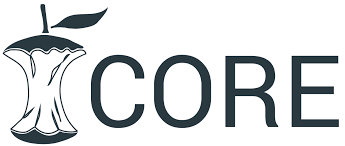UNDERGROUND CRUDE OIL PIPELINE LEAKAGE DETECTION USING DEXINED DEEP LEARNING TECHNIQUES AND LAB COLOR SPACE
DOI:
https://doi.org/10.25195/ijci.v49i2.418Keywords:
Drone, oil spill, MQTT IoT Protocol, LAB color space, Dexi for Edge Detection, Xception networks, HEDAbstract
Computer vision plays a big role in pipeline leakage detection systems and is one of the latest techniques. Still, it requires a powerful image-processing algorithm to detect objects. The purpose of this work is to develop and implement spill detection in oil pipes caused by leakage using images taken by a drone equipped with a Raspberry Pi 4. The acquired images are sent to the base station along with the global positioning system (GPS) location of the captured images via the message queuing telemetry transport Internet of Things (MQTT IoT) protocol. At the base station, images are processed to identify contours by dense extreme inception networks for edge detection(DexiNed) deep learning techniques based on holistically-nested edge detection(HED) and extreme inception (Xception) networks. This algorithm is capable of finding many contours in images. To find a contour with black color, the CIELAB color space (LAB) has been used. The proposed algorithm removes small contours and computes the area of the remaining contours. If the contour is above the threshold value, it is considered a spill; otherwise, it will be saved in a database for further inspection. For testing purposes, three different spill areas were implemented with spill sizes of (1 m^2,2 m^2 ,and 3 m^2). Images have been captured at three different heights (5 m, 10 m, and 15 m) by the drone used to capture the images. The result shows that effective detection has been obtained at 10 meters high. To monitor the entire system, a web application has been integrated into the base station.
Downloads
Downloads
Published
Issue
Section
License

This work is licensed under a Creative Commons Attribution-NonCommercial-NoDerivatives 4.0 International License.
IJCI applies the Creative Commons Attribution (CC BY) license to articles. The author of the submitted paper for publication by IJCI has the CC BY license. Under this Open Access license, the author gives an agreement to any author to reuse the article in whole or part for any purpose, even for commercial purposes. Anyone may copy, distribute, or reuse the content as long as the author and source are properly cited. This facility helps in re-use and ensures that journal content is available for the needs of research.
If the manuscript contains photos, images, figures, tables, audio files, videos, etc., that the author or the co-authors do not own, IJCI will require the author to provide the journal with proof that the owner of that content has given the author written permission to use it, and the owner has approved that the CC BY license being applied to content. IJCI provides a form that the author can use to ask for permission from the owner. If the author does not have owner permission, IJCI will ask the author to remove that content and/or replace it with other content that the author owns or has such permission to use.
Many authors assume that if they previously published a paper through another publisher, they have the right to reuse that content in their PLOS paper, but that is not necessarily the case – it depends on the license that covers the other paper. The author must ascertain the rights he/she has of a specific license (a license that enables the author to use the content). The author must obtain written permission from the publisher to use the content in the IJCI paper. The author should not include any content in her/his IJCI paper without having the right to use it, and always give proper attribution.
The accompanying submitted data should be stated with licensing policies, the policies should not be more restrictive than CC BY.
IJCI has the right to remove photos, captures, images, figures, tables, illustrations, audio, and video files, from a paper before or after publication, if these contents were included in the author's paper without permission from the owner of the content.











